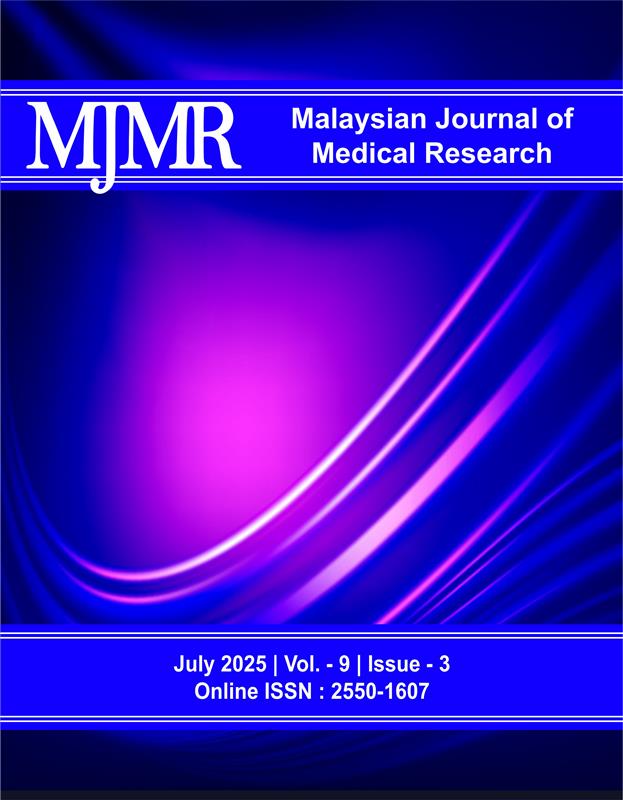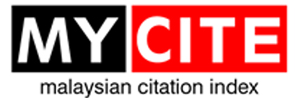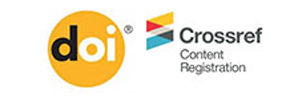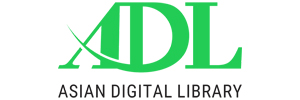Combined Effect of Honey Supplementation and Walking Exercise on Antioxidant Enzyme Markers in 50 to 65 Years Old Postmenopausal Women
DOI:
https://doi.org/10.31674/mjmr.2025.v09i03.002Abstract
Background: This study examined how honey supplements and walking exercise affected antioxidant enzymes in postmenopausal women between the ages of 50 and 65 years old. Methods: Forty participants were split into four groups: walking exercise alone (Ex), honey supplementation alone (H), sedentary without honey supplementation control (C), and combination honey supplementation and walking exercise (HEx) groups. The H group consumed 20g of honey daily for six weeks, while the Ex group performed walking exercises 30 min per day, thrice a week for six weeks. The HEx group followed both regimens. Anthropometry, body composition, levels of glutathione peroxidase (GPx) and superoxide dismutase (SOD) in the blood were measured. Statistical analysis was performed by using repeated measure analysis of variance (ANOVA). Results: There are significant increases in body weight in C, H and Ex groups but no significant changes in body fat percentage in all the groups. SOD levels remained unchanged in all the groups However, the Ex-group’s GPx was significantly greater (p=0.016) at the post-test than it was at the pre-test. Additionally, a propensity for a significant rise (p=0.05) in GPx relative to its pre-test value was observed in the HEx group. Conclusion: The results suggest that giving postmenopausal women aged 50 to 65 honey supplements for six weeks had no discernible effect on their GPx activity. However, walking exercise and their combination with honey supplementation have the potential to increase GPx activity. Nevertheless, more studies with longer study duration are warranted to confirm their efficacy.
Keywords:
Antioxidant Enzymes, Honey Supplementation, Postmenopausal Women, Walking ExerciseDownloads
References
Alvarez-Suarez, J. M., Tulipani, S., Díaz, D., Estevez, Y., Romandini, S., Giampieri, F., Damiani, E., Astolfi, P., Bompadre, S. & Battino, M. (2010). Antioxidant and antimicrobial capacity of several monofloral Cuban honeys and their correlation with color, polyphenol content and other chemical compounds. Food and Chemical Toxicology, 48(8-9), 2490-2499. https://doi.org/10.1016/j.fct.2010.06.021
American College of Sports Medicine. (2010). General principles of exercise prescription. In ACSM’s guidelines for exercise testing and prescription (8th ed). Lippincott Williams & Wilkins. Retrieved from: https://archive.org/details/isbn_9780781769037. Accessed on 18th May 2024.
Azizbeigi, K., Stannard, S. R., Atashak, S., & Haghighi, M. M. (2014). Antioxidant enzymes and oxidative stress adaptation to exercise training: comparison of endurance, resistance, and concurrent training in untrained males. Journal of Exercise Science and Fitness, 12(1), 1-6. https://doi.org/10.1016/j.jesf.2013.12.001
Cebula, A., Tyka, A. K., Pilch, W., Szyguła, Z., Pałka, T., Sztafa-Cabała, K., Frączek, B., & Tyka, A. (2017). Effects of 6-week Nordic walking training on body composition and antioxidant status for women >55 years of age. International Journal of Occupational Medicine and Environmental Health, 30(3), 445–454. https://doi.org/10.13075/ijomeh.1896.00860
Deaton, C. M., & Marlin, D. J. (2003). Exercise-associated oxidative stress. Clinical Techniques in Equine Practice, 2(3), 278-291. https://doi.org/10.1053/S1534-7516(03)00070-2
Deniz, K. N., & Aksoy, M. K. (2025). The effect of aerobic exercise on bone formation and resorption markers and the quality of life tests in postmenopausal osteopenic patients. BMC Musculoskeletal Disorders, 26(1), 385. https://doi.org/10.1186/s12891-025-08578-z
Doshi, S. B., & Agarwal, A. (2013). The role of oxidative stress in menopause. Journal of Mid-life Health, 4(3), 140-146. https://doi.org/10.4103/0976-7800.118990
Erejuwa, O. O., Sulaiman, S. A., & Ab Wahab, M. S. (2012). Honey: a novel antioxidant. Molecules (Basel, Switzerland), 17(4), 4400–4423. https://doi.org/10.3390/molecules17044400
Fadzel, W. C. P., Chen, C. K., Ooi, F. K., & Mohamed, M. (2018). Effects of bee bread supplementation on endurance running performance and total antioxidant status in recreational athletes. International Journal of Applied Research in Natural Products, 11(1), 17-23. Retrieved from: https://eprints.ums.edu.my/id/eprint/23997/1/Effects%20of%20bee%20bread%20supplementation%20on%20endurance%20running%20performance%20and%20total%20antioxidant%20status%20in%20recreational%20athletes.pdf. Accessed on 19th December 2024.
Fisher, G., Tamhane, A., Moellering, D. R., Behrens, C. E., & Hunter, G. R. (2025). Association Between Antioxidant Capacity and Vascular Hemodynamics in Premenopausal Women Following Exercise Training. The Journal of Clinical Hypertension, 27(4). https://doi.org/10.1111/jch.70046
Gomez-Cabrera, M. C., Borrás, C., Pallardó, F. V., Sastre, J., Ji, L. L., & Viña, J. (2005). Decreasing xanthine oxidase-mediated oxidative stress prevents useful cellular adaptations to exercise in rats. The Journal of Physiology, 567(1), 113–120. https://doi.org/10.1113/jphysiol.2004.080564
Gomez-Cabrera, M. C., Domenech, E., & Viña, J. (2008). Moderate exercise is an antioxidant: upregulation of antioxidant genes by training. Free Radical Biology & Medicine, 44(2), 126–131. https://doi.org/10.1016/j.freeradbiomed.2007.02.001
Husniati, Y. L., Hazlina, N. N., Azidah, A. K., Norhayati, M. N., Amrah, S. S., Idiana, H. I., Bahari, I.S., Juhara, H. & Imran, M. K. (2013). Safety of honey in postmenopausal women. International Medical Journal, 20(1), 25-28. Retrieved from: https://shorturl.at/FVXgb. Accessed on 27th July 2024.
Miyazaki, H., Oh-ishi, S., Ookawara, T., Kizaki, T., Toshinai, K., Ha, S., Haga, S., Ji, L.L. & Ohno, H. (2001). Strenuous endurance training in humans reduces oxidative stress following exhausting exercise. European Journal of Applied Physiology, 84(1-2), 1-6. https://doi.org/10.1007/s004210000342
Muhamad, A. S., Keong, C. C., Kiew, O. F., Abdullah, M. R., & Lam, C. K. (2010). Effects of Eurycoma longifolia Jack supplementation on recreational athletes’ endurance running capacity and physiological responses in the heat. International Journal of Applied Sports Sciences, 22(2), 1-19. https://doi.org/10.24985/ijass.2010.22.2.1
Na'aim, N., Chen, C. K., Ooi, F. K., & Mohamed, M. (2022). Combined effects of bee pollen supplementation and resistance training on aerobic capacity, muscular performance, antioxidant status, and bone metabolism markers in young men: A randomised controlled trial. Malaysian Journal of Nutrition, 28(2). https://doi.org/10.31246/mjn-2021-0072
Ooi, F. K., Ismail N., Abdullah M. (2011). Effects of Combined Aerobic Dance Exercise and Honey Supplementation on Bone Turnover Markers in Young Females. Asian Journal of Exercise & Sports Science, 8(1).
Pescatello, L. S., Thompson, W. R., & Gordon, N. F. (2009). A preview of ACSM's guidelines for exercise testing and prescription. ACSM's Health & Fitness Journal, 13(4), 23-26. https://doi.org/10.1249/FIT.0b013e3181aae1a0
Peternelj, T. T., & Coombes, J. S. (2011). Antioxidant supplementation during exercise training: beneficial or detrimental?. Sports Medicine, 41(12), 1043–1069. https://doi.org/10.2165/11594400-000000000-00000
Powers, S. K., & Jackson, M. J. (2008). Exercise-induced oxidative stress: cellular mechanisms and impact on muscle force production. Physiological Reviews, 88(4), 1243–1276. https://doi.org/10.1152/physrev.00031.2007
Radak, Z., Zhao, Z., Koltai, E., Ohno, H., & Atalay, M. (2013). Oxygen consumption and usage during physical exercise: the balance between oxidative stress and ROS-dependent adaptive signaling. Antioxidants & Redox Signaling, 18(10), 1208–1246. https://doi.org/10.1089/ars.2011.4498
Sahrir, N. A., Ooi, F. K., Chen, C. K., Kyi, W. M., & Meor-Osman, J. (2017). Effects of oat bran and jogging on aerobic capacity, lipid profile and antioxidant parameters in young sedentary males. Journal of Physical Education and Sport, 17(1), 48-59. https://doi.org/10.7752/jpes.2017.s1008
Sen C. K. (1995). Oxidants and antioxidants in exercise. Journal of Applied Physiology, 79(3), 675–686. https://doi.org/10.1152/jappl.1995.79.3.675
Shafin, N., Othman, Z., Zakaria, R., & Nik Hussain, N. H. (2014). Tualang honey supplementation reduces blood oxidative stress levels/activities in postmenopausal women. International Scholarly Research Notices, 2014(1). https://doi.org/10.1155/2014/364836
Simioni, C., Zauli, G., Martelli, A. M., Vitale, M., Sacchetti, G., Gonelli, A., & Neri, L. M. (2018). Oxidative stress: role of physical exercise and antioxidant nutraceuticals in adulthood and aging. Oncotarget, 9(24). https://doi.org/10.18632/oncotarget.24729
Tortora, G. J., & Derrickson, B. H. (2018). Principles of Anatomy and Physiology. John Wiley & Sons, New Jersey, United States.
Valko, M., Rhodes, C. J. B., Moncol, J., Izakovic, M. M., & Mazur, M. (2006). Free radicals, metals and antioxidants in oxidative stress-induced cancer. Chemico-biological Interactions, 160(1), 1-40. https://doi.org/10.1016/j.cbi.2005.12.009
Wadiah, A. N. A., Ooi, F. K., Chen, C. K., & Nudri, W. D. W. (2015). Effects of chocolate malt drink consumption combined with aerobic dance exercise on blood bone metabolism markers, antioxidant enzymes and aerobic capacity in young females. Sport Exercise Medicine Open Journal, 1(3), 71-80. https://doi.org/10.17140/SEMOJ-1-111
Yarmohammadi, M., & Abdi, A. (2014). The effects of six weeks moderate-intensity aerobic training on plasma glutathione peroxidase and superoxide dismutase in women with type-2 diabetes. European Journal of Experimental Biology, 4(4), 202-206.Retrieved from: www.pelagiaresearchlibrary.com. Accessed on 25th August 2024.
Published
How to Cite
Issue
Section
License
Copyright (c) 2025 Malaysian Journal of Medical Research (MJMR)

This work is licensed under a Creative Commons Attribution-NonCommercial-NoDerivatives 4.0 International License.























